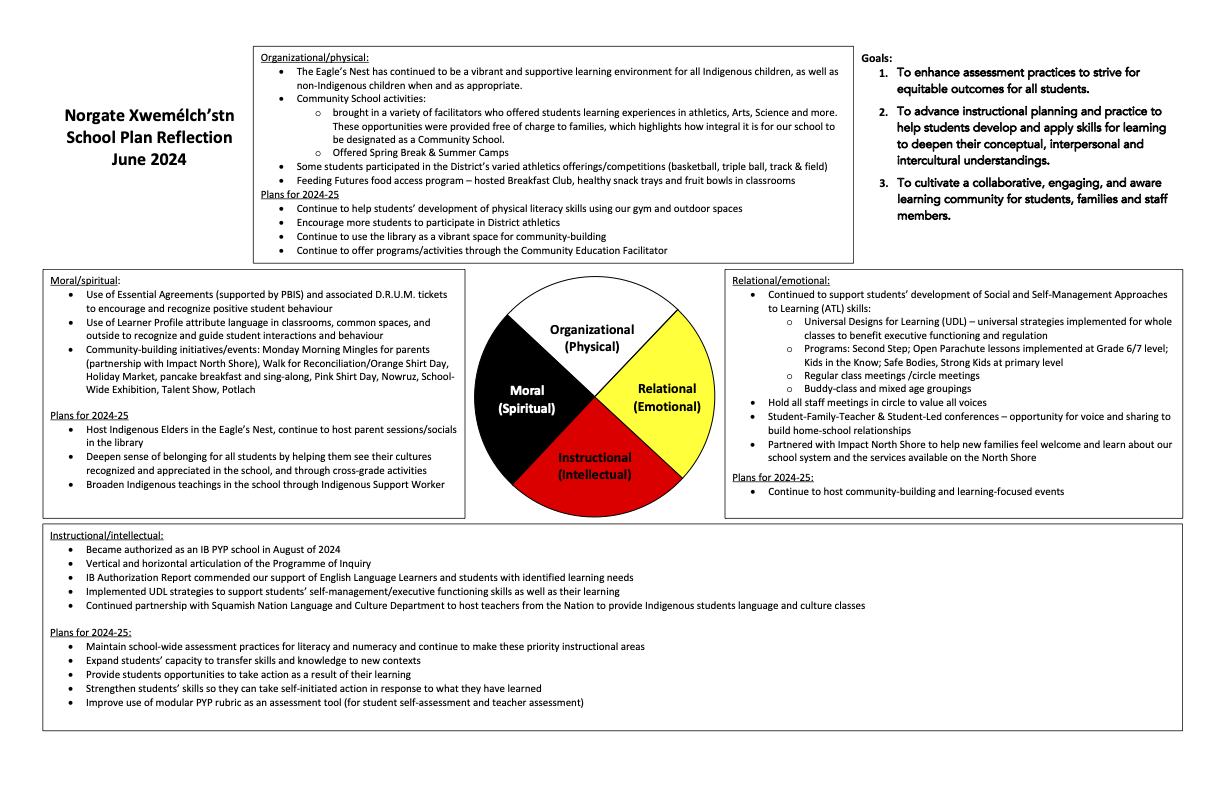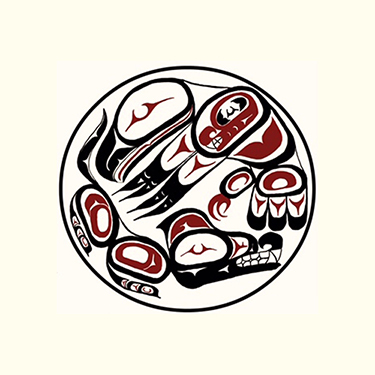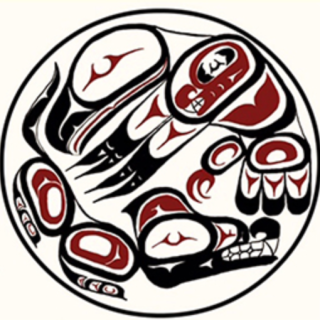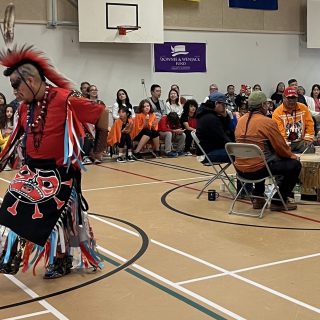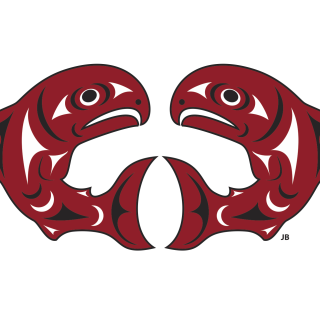Vision to Goal Setting
What is our Vision for Learning?
Norgate Xwemelch'stn Values & Vision
The Norgate Xwemelch’stn learning community works together to support students’ academic, emotional, physical, social, and spiritual well-being. We strive to develop inquiring, knowledgeable, and caring people who demonstrate intercultural respect and understanding.
This statement aligns with our values as educators and articulates a vision for the skills and dispositions we aim to help your children develop. Through partnership with you, their families, we will support your children’s well-being and help them find balance. And, by providing them rich learning experiences at school and in the community we can share our collective wisdom and expand the childrenâs capacity to think critically and creatively, so that they may choose to act compassionately.
The Norgate Xwemelch’stn community strives to cultivate a welcoming, inclusive, engaging and aware learning environment, where all students and their families feel seen, heard, and appreciated. We are fortunate to have students from diverse backgrounds and origins at our school, and this makes for a beautifully rich learning community.
Importantly, we are committed partners in making steps towards Reconciliation with Indigenous students and their families through reciprocity and respect. Gifts of protocol and tradition from our local community help us honour students living in two worlds and help us provide a safe environment for all students to learn. By making time and space to connect with students and their families, our staff aims to create a genuine sense of belonging for all students. We recognize the value of school staff and families working together. The Norgate Xwemelch’stn community shares learning through balance and circle: Spiritual, Intellectual, Emotional and Physical.
Chen kw’enman tumiyap “We thank you all.”
Our Process: Engagement and Learning
- Watch. Listen. Show Respect – Murray Sinclair (Truth and Reconciliation Commission)
- Engage the three pathways for change: Students, Community and Staff (NVSD Indigenous Ed Team)
- Included student, staff and community input, in alignment with NVSD core values and vision, in our revised Code of Conduct and Mission statement
- Appreciative inquiry: What has brought Norgate Xwemelch’stn to where it is now? What positive changes have been implemented, and where to next to advance student learning?
- Strategic Action Plan: How can we enhance learning experiences and strive for equitable outcomes for all students?
- Application to the International Baccalaureate Organization to become an authorized IB World School offering the Primary Years Programme submitted in Spring of 2022; anticipate IB Authorization Visit in Fall of 2023
Core Planning Team
2023-24 Planning Team:
Community: Cristina Padres, Bahar Adel
Staff: David Andrews, Karen Birchenall, Chris Murphy, Jeffrey Chan, Glenda Robertson
Students: Intermediate Classes
Planning & Implementation
What is our Action Plan?
School Plan Goals
Three Pathways for Change
ASSESSMENT PRACTICES
Objective 1.b: Involving students in process of self-reflection/self-assessment on a regular basis (assessment as learning).
Students are building their capacities to self-reflect and self-assess by:
- Sharing their perspectives at SFT Conferences
- Engaging in ongoing self-reflections and self-assessments including their summative self-assessment of their development of the Approaches to Learning skills (Core Competencies)
- Developing agency by seeking a clear understanding of expectations and success criteria (what they need to do and show understanding of).
Student Voice:
“Self-reflection is useful because you can track where you are and what you can do better.”
“Reflect on what you did – what you can do well and what to do better. We can learn from our mistakes and know what to do differently.”
“It’s good for your brain, thinking about your learning.”
Objective 1.c: Including families through ongoing communication related to student learning (assessment for and as learning).
- Attending Meet the Teacher event
- Participating in Student-Family-Teacher Conferences
- Participating in Spring Family Conferences
- Participating in IEP Meetings (for students with identifications)
- Accessing and reading Report Cards (IEP and English Language Support progress reporting)
- Reading/responding to weekly student self-reflections (some classes)
- Ongoing communication with classroom and Learning Services teachers – some parents/caregivers expressed desire for more frequent updates regarding student progress
- A number of families were not able to attend conferences. Therefore, we will explore possibilities around how students can share their learning with the broader school community.
Objective 1.a: Engaging in school-wide assessment processes to inform intervention model (assessment for learning).
Learning Services teachers will work closely with classroom teachers to determine best ways to support students needs, determining what supports/strategies/methods can be implemented universally (i.e., in the classroom that will benefit all students); what targeted supports will be beneficial for small groups of students; and how the team will provide intensive supports for students with unique learning needs.
Learning services teachers took the lead on building and implementing a year-long assessment calendar. Assessments utilized:
- K to Gr. 3: Early Literacy Assessment (ELA); school-wide writing samples (4 times this year) assessed using ELA rubrics
- Gr. 4 to 7: PM Benchmarks, Jerry Johns, Fountas & Pinnell (F & P) Assessments for reading; school-wide writing samples (3 times this year) assessed using BC Performance Standards
- Kindergarten Numeracy Assessment
- Gr. 1 to 7: SNAP Math (Chilliwack School District)
Objective 1.b: Involving students in process of self-reflection/self-assessment on a regular basis (assessment as learning).
- Hosted Student-Family Teacher (SFT) Conferences through which individual student goals were set in relation to the Approaches to Learning (ATL)
- Spring SFT goal reflection included on Term 2 report card
- Some teachers have had students engage in weekly reflections
- An increasing number of teachers incorporated student self-reflection into lessons and unit plans
- May ATL reflection
Objective 1.c: Including families through ongoing communication related to student learning (assessment for and as learning).
- Meet the Teacher event
- Student-Family-Teacher Conferences
- Spring Family Conferences
- IEP Meetings (for students with identifications)
- Report Cards (IEP and English Language Support progress reporting)
- Weekly student self-reflections (some classes)
- MS Teams / email communication
- Weekly Principal communications to families
- Teachers’ communication with their students’ families
Objective 1.d: Designing assessment tasks and providing ongoing formative feedback to allow students to transfer their learning in new contexts (assessment for and of learning).
- Staff learning related to concept and inquiry-based instruction and learning
- Staff learning related to assessment using the Carson Graham Family of Schools proficiency scale
- Co-planning of units of inquiry with guidance from IB Coordinator
INSTRUCTIONAL PLANNING & PRACTICE
Objective 2.a: Embedding Indigenous Worldviews, and ways of knowing, doing and being into units of inquiry and daily instruction/learning.
Students at all grade levels have participated in many lessons and activities intended to help them learn from Indigenous Worldviews and knowledge. They have also participated in outdoor place-based learning opportunities. The Indigenous Education team has provided many teachings and have facilitated a broad range of cultural learning opportunities. We are grateful to the Squamish Nation Language and Culture department for providing teachers of Skwxwu7mesh language classes to the Indigenous students in the school. Students not only learned language with Ms. Diana, Ms. Cathy and Ms. Jules, they also learned important teachings from their culture.
Objective 2.c: Supporting students social and emotional wellbeing and development through instruction and wrap-around supports.
Students have participated in weekly Second Step lessons, as well as other sessions such as Social Thinking/Wee Thinkers; SOGI; Safe Bodies, Strong Kids; Open Parachute.
Objective 2.c: Supporting students’ social and emotional wellbeing and development through instruction and wrap-around supports.
Thank you to all caregivers for your partnership in helping them develop emotional intelligence, resilience, age-appropriate independence and key social skills. Please refer to the parent tab of our school website for a listing of supports and services available to parents/guardians/caregivers to aid in helping your children thrive. We are honoured to help you in supporting your children to develop a positive sense of self, happy and healthy social connections, and skills for emotional and social regulation.
Objective 2.a: Embedding Indigenous Worldviews, and ways of knowing, doing and being into units of inquiry and daily instruction/learning.
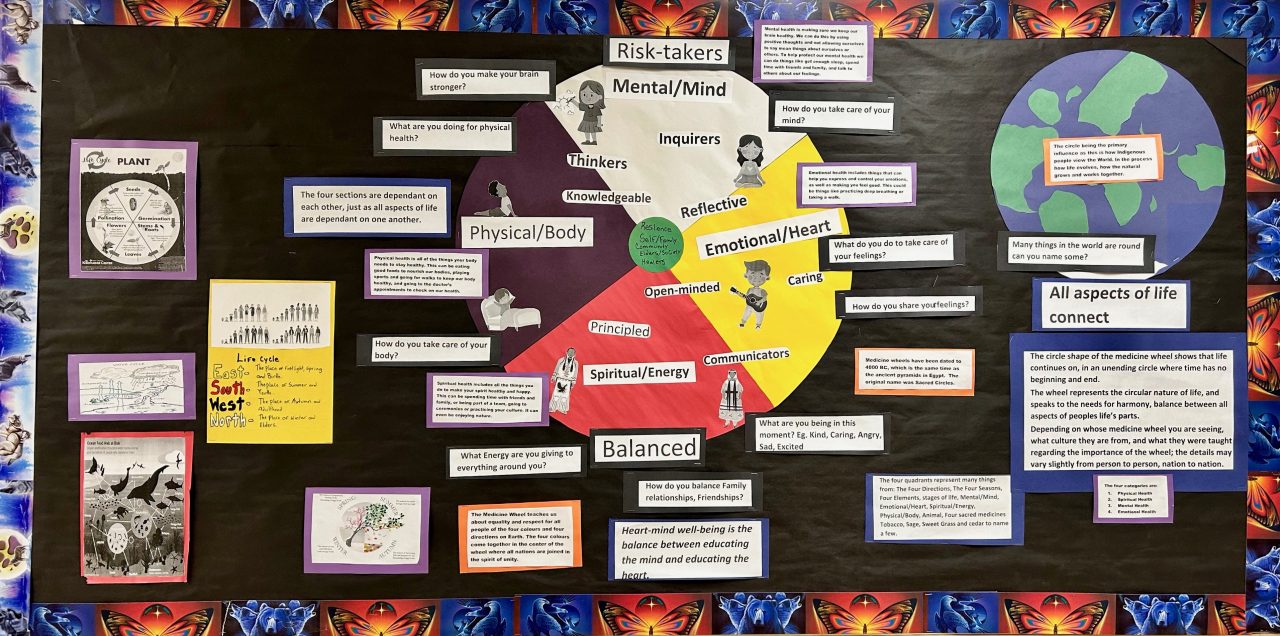
Indigenous Support Worker, Sonja Nahanee has continued to provide rich cultural teachings and activities including, but not limited to stories, legends, weaving, beading, medicines; facilitated professional development sessions with support staff; and helped Indigenous students with their learning and provided them social-emotional support.
Squamish Nation teachers, provided through partnership with the Squamish Nation’s Language and Culture Department, taught language classes 1 day per week as well as culture classes 1 day per week.
Classroom teachers included First Peoples Principles and circle teachings/medicine wheel, Indigenous stories/legends, oral storytelling practices, and cultural activities in their instruction. They taught about historical and current-day interactions between Indigenous peoples and settler-Canadians as well as Indigenous perspectives on present-day local and global issues.
Objective 2.b.: Incorporating learning objectives (skills and content knowledge) from multiple subject areas in units of instruction.
Ongoing development and reflection on the Programme of Inquiry (POI) through collaborative planning processes. All units of inquiry that make up the POI have been written, taught and reflected on, and all include more than one subject area.
Objective 2.c: Supporting students’ social and emotional wellbeing and development through instruction and wrap-around supports.
- School-wide implementation of Second Step
- Direct counsellor supports are provided for many students, and the counsellor also provides full-class support through lessons/presentations.
- Counsellor teaching Wee Thinkers, facilitating SOGI presentations, arranging student sessions by outside facilitators
- Liaising with community providers including Capilano Community Services, North Shore Child & Youth Mental Health, Foundry, and more to support students/families
- Purchased Social Thinking and Self-Regulation resources and tools
- Many staff members are Ukeru trained including trauma-awareness training
COMMUNITY SPIRIT
Highlights of the 2023-24 school year worth noting:
- Earning Our DRUM – By demonstrating positive behaviours at school, in accordance with our Code of Conduct, students earn DRUM tickets.
- Ongoing buddy class activities, participation in extra-curricular athletics, student leadership opportunities (Gr. 6/7 lunch monitors, library helpers, etc)
- Orange Shirt Day Walk for Reconciliation
- Pancake breakfast, winter holiday musical performances and sing-along
- Pink Shirt Day
- Nowruz recognition – Facilitated by the many new Persian parents/guardians as a way to help all in our community learn about and appreciate Persian culture
- FUN day!
- School-wide Exhibition – A showcase of IB learning at all grade levels!
- Talent Show
- Potlatch – An enriching Indigenous gathering and celebration to show our sense of community
We appreciate our wonderful PAC Executive team members who consistently strive to make families feel welcome and include families in school initiatives. They are also very helpful in raising with school staff feedback they hear from parents/guardians. This helps the school staff understand parents’ perspectives and be responsive to parents’ concerns/questions.
This year, there were many opportunities for parents/guardians to participate in the school community:
- Monday Morning Mingles – opportunities for parents/guardians to meet in the library, sometimes with a presentation
from staff members/community service providers; in partnership with Impact North Shore - Pancake breakfast, winter holiday musical performances and sing-along
- Nowruz recognition – Facilitated by the many new Persian parents/guardians as a way to help all in our community learn about and appreciate Persian culture
- School-wide Exhibition – A showcase of IB learning at all grade levels!
- Talent Show
- Potlatch – An enriching Indigenous gathering and celebration to show our sense of community
Staff members have initiated, planned, coordinated, and led a variety of community-building events and activities including:
Class/school events to which families were invited: Individual class events and field trips; school-wide events listed under the Community tab (most of these events were organized by staff members!)
Displays/activities to recognize important occasions, share teachings and appreciate groups of people: Orange Shirt Day, Black History month, Pink Shirt Day, Asian Heritage month, Red Dress Day/Moosehide Campaign, Earth Day, Pride month and LGBTQ2S+, National Indigenous Peoples month, Medicine Wheel teachings, Indigenous plants, and more. Thanks to staff members for your leadership on these impactful displays.
Gardening – With the help of staff members, particularly Ms. Sonja, students have continued to help with the plants in our garden boxes and planters.
Spring Break & Summer Camps – Thanks to Ms. Michelle Bean for coordinating camps at the school during school breaks. Thanks as well to staff members Sura Ravindran and Tara Ward for being positive leaders at these camps.
Talent Show – Thanks to Ms. Malahoff, Mr. Murphy, Ms. Morrison and Ms. Natalie for your support in helping students prepare for a very special talent show!
Athletics – Students participated in extra-curricular Cross Country, intramural basketball, and Track & Field. Thanks to Ms. Megan Friesen for taking the lead on coordinating these sports activities and to the volunteer coaches and supervisors who helped make these opportunities possible for the students.
Fun Day – Thanks to the staff members who organized our amazingly fun Fun Day, and to the rest of the staff for helping our Fun Day run smoothly with lots of fun.
Potlatch – HUGE thanks to Ms. Sonja Nahanee who not only facilitated lessons and gift-making with classes leading up to our special Potlatch, but who was also instrumental in making this day a success!
Monitor Evaluate & Adapt
What are our Indicators of Progress?
Objective 1.a. Engaging in school-wide assessment processes to inform intervention model (assessment for learning).
Kindergarten Literacy Assessment (ELA/TOPA) – students who do not score well on this assessment were provided support from our Learning Services Team members
The NVSD’s Early Literacy Assessment (ELA) has been very informative and has enabled us to identify and implement supports at universal, targeted, and intensive levels.
For students in Grades 4 through 7, we have used the PM Benchmark and Fountas & Pinnell (F&P) assessment tools to assess students’ reading progress.
Reading and writing assessments completed last and this year led Kindergarten-Grade 3 teachers to have a more intentional approach to teaching phonics and phonemic awareness. This helped students build capacity to decode an increasing number of words, as well as spell many more words accurately and to use “inventive spelling” for words they aren’t familiar with how to spell.
K Numeracy assessment data shows which students require further support. These students are provided support through out Learning Services Team.
Objective 1.b. Involving students in the process of self-reflection/self-assessment on a regular basis (assessment for and as learning).
Goals set with students early in the school year and reflected on during Student-Family-Teacher (SFT) conferences show growth across the grades. An increasing number of students’ goals are more specific and focused on skills for learning (Approaches to Learning). Student voice came through in the phrasing of many of the goals.
The reflections on the goals set during SFTs show that many students were supported to take intentional steps towards achieving their goals. Some also indicated they felt they had achieved their goals, and therefore, set new ones for the remainder of the year.
Objective 1.c: Including families through ongoing communication related to student learning (assessment for and as learning).
We were pleased to welcome families to Meet the Teacher night, as well as to host a high percentage of families during Student-Family-Teacher Conferences, and Student-Led Conferences.
Family participation at IEP Meetings was excellent this year (very few families were unable to attend) and this resulted in families having input and clear understanding of student learning profiles and associated goals and objectives.
Communication between home and school occurs through various forms – in person, via email, on Teams. Many teachers expressed they have good communication lines with their students’ families. Some expressed it is sometimes hard to reach families.
Objective 1.d: Designing assessment tasks and providing ongoing formative feedback to allow students to transfer their learning in new contexts (assessment for and of learning).
Assessment through formative feedback and feed forward, and designing assessment tasks to allow transfer of learning will be an ongoing focus. We have identified the need to make more use of the PYP rubric to assess students. Moreover, ongoing learning related to designing transfer tasks will be continued focus.
Goal: To advance instructional planning and practice to help students develop and apply skills for learning to deepen their conceptual, interpersonal and intercultural understandings.
Objective 2.a: Embedding Indigenous Worldviews, and ways of knowing, doing and being into units of inquiry and daily instruction.
Indigenous Worldviews, perspectives, First Peoples Principles of Learning, Ways of Knowing, Doing and Being are regularly and intentionally embedded into instruction. This is thanks to collaboration with our Indigenous Support Worker, intentional inclusion of, and reference to, the First Peoples Principles of Learning, and use of available resources.
We are grateful that Ms. Sonja Nahanee, Indigenous Support Worker, provides Indigenous teachings to all students and staff members. Her leadership and instruction have helped our school community deepen our understanding of maltreatment of Indigenous peoples in our country, as well as develop deep appreciation for the teachings, language and culture of the Squamish peoples.
We welcome the opportunity to connect with and learn from Indigenous community members to even more authentically and thoroughly embed Indigenous Worldviews, and ways of knowing, doing, and being into how we engage with students and families and into how we teach the students.
Objective 2.b: Incorporating learning objectives (skills and content knowledge) from multiple subject areas in units of instruction.
Objective 2.c: Supporting students social and emotional well-being and development through instruction and wrap-around supports.
We have implemented the Second Step Program school-wide with positive results; many students are able to use the skills for learning, can recognize and name their emotions, can identify and use strategies to calm down, and are able to engage effectively in problem-solving.
To support well-being, sense of belonging, and shared responsibility as part of the community we give out DRUM tickets. When we reach 100 DRUM tickets the school community earns an extra outdoor recess break.
All classes are supported by the school counsellor and Indigenous Support Workers. Many students access additional support from these staff members in small groups and/or individually.
Students’ social and emotional wellbeing is also supported by the classroom teachers, educational assistants, and administrators. We work as a team to support all of the children.
Goal: To cultivate a collaborative, engaging, and aware learning community for all students, families and educators.
We were able to offer many community-building events this school year within classrooms, between classes, and with families. We were also pleased to be able to welcome parents and caregivers into the school for conferences, school community events, and to volunteer. Please look for opportunities to come into the school during the 2023-24 school year!
Data gathered from Grade 5 students (21 students) through the Middle Years Development Instrument (MDI) revealed the following:
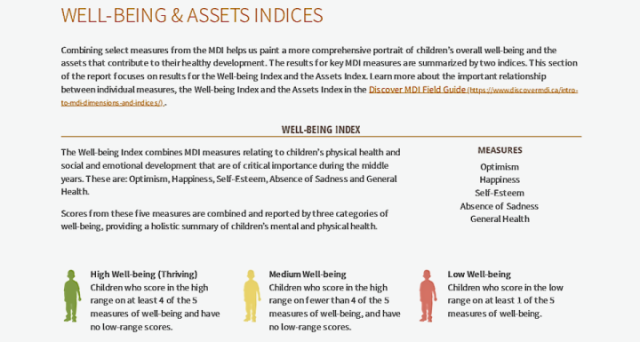
Overall Well-Being Index: 20% Thriving, 30% Medium, 50% Low
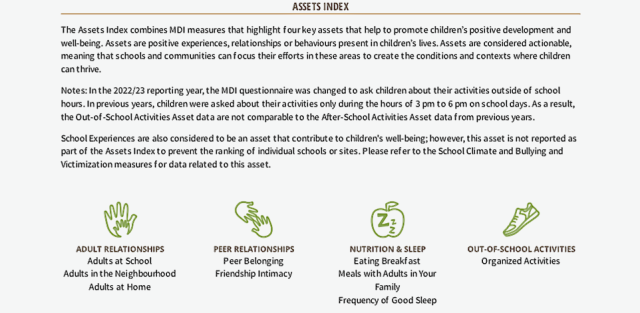
Percentage of children reporting the presence of an asset:
65% Adult Relationships, 75% Peer Relationships, 52% Nutrition & Sleep, 90% Out-Of-School Activities
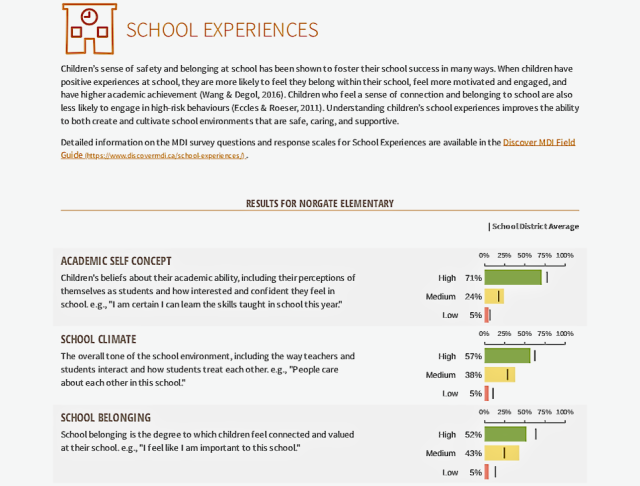
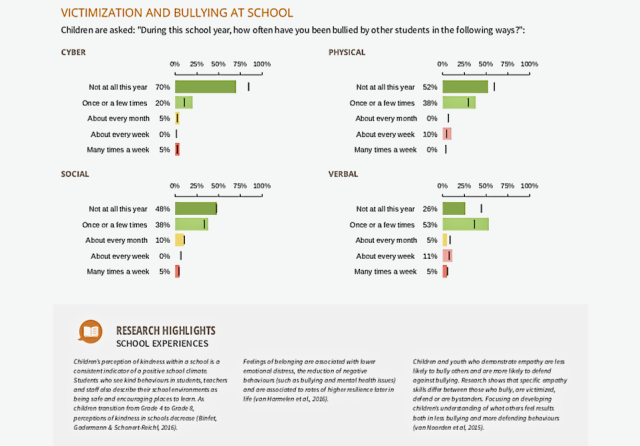
Related to the above, we identified the following as opportunities for the 2023-24 school year:
- Help families connect to services that are available in the neighbourhood and school by inviting community partners to present at PAC meetings/Parent Meet & Mingle mornings.
- Continue to provide opportunities for parents to meet other parents whose children attend the school.
- Possible parent/guardian information sessions: Healthy eating/sleeping/screen time habits, neurodiversity in schools, anxiety in children
- Enhance school climate through ongoing emphasis and support for having a caring school community
- Aim to increase number of children who report a sense of belonging and importance at school through positive recognition and inclusion of more student voice
- Continue with anti-bullying/pro-kindness teaching, and responsive follow-through when bullying situations are witnessed/reported
Latest Progress & Updates
